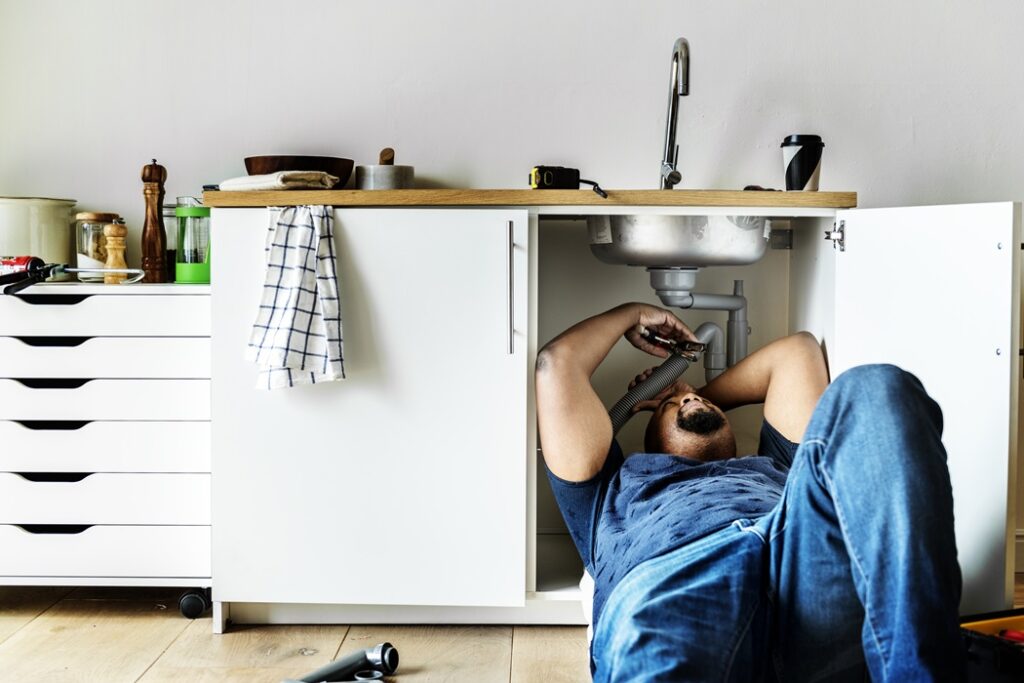Water leaks in a home are more than just a nuisance; they’re potential harbingers of significant damage, health risks, and unexpected expenses. Early detection of these leaks is vital for preserving the structural integrity of your property, ensuring a safe living environment, and controlling water-related costs. Let’s dive deeper into the signs of water leaks, understand the consequences of neglect, discuss preventative strategies, and determine when to enlist professional plumbing help.
Table of Contents
Recognizing the Signs of Water Leaks
Early identification of water leaks can prevent a series of unwelcome events. Here are expanded details on common leak indicators:
Unexpected Increases in Water Bills: An unaccounted-for rise in water bills can often signal leaks. Compare your current usage to the past months; a consistent increase could indicate the presence of a leak.
Musty Odors: Mold and mildew thrive in moist environments. A persistent musty smell, especially in traditionally dry areas, suggests the presence of hidden moisture.
Stains on Walls, Ceilings, or Floors: Water stains are telltale signs of leaks. These may appear as discolored spots or patches that grow over time.
Sounds of Running Water: The sound of water moving through pipes when no tap is open clearly indicates a leak. This is often most noticeable at night when the house is quiet.
Deteriorating Paint or Wallpaper: Moisture can cause paint and wallpaper to peel or bubble. If you notice these changes without an apparent cause, investigate for leaks.
Cracked or Warped Flooring: Water leaks under floors can lead to cracking, buckling, or warping, especially in wood and laminate flooring.
Persistent Dampness: Areas that remain damp or wet without an obvious source can indicate a slow, persistent leak.
Reduced Water Pressure: A sudden or unexplained drop in water pressure throughout your home could signal a leak in the water supply line.
Soggy or Unusually Green Patches in the Yard: Leaks in the main water line or sprinkler system can create soggy patches or areas where the grass is greener and grows faster than surrounding areas.
Water Meter Changes: If you suspect a leak, turn off all water inside and outside your home, then watch the water meter. If it continues to change, it’s likely there’s a leak.
Foundation Cracks: Over time, water leaks can lead to foundation cracks as water erodes or shifts the ground beneath your home.
Rust Formation: Excessive moisture from leaks can cause rust on pipes and fixtures.
The Toll of Ignoring Water Leaks
The consequences of neglecting water leaks can be far-reaching, extending beyond immediate water damage to encompass a host of secondary issues that can significantly compromise the structural integrity of your home, lead to serious health concerns, and inflate your monthly expenses unexpectedly.
Prolonged exposure to moisture can weaken foundational supports, encourage the proliferation of mold and mildew, and result in the deterioration of drywall, flooring, and even the home’s electrical system, posing fire risks.
Moreover, the persistent dampness can attract pests like termites and rodents, which thrive in moist environments, leading to potential infestations that can cause further damage and require costly extermination services.
The continuous leakage can also strain your water supply, contributing to environmental depletion and increased utility bills, making it a personal financial issue and an environmental concern. Ignoring leaks allows these problems to grow silently, often unnoticed until they become severe, making early detection and intervention critical to avoiding these extensive and expensive repercussions.
Preventative Measures
Mitigating the risk of leaks or minimizing their impact involves proactive measures:
Regular Inspections: Check all accessible pipes, faucets, and connectors for signs of wear and tear, corrosion, or dripping water. Use a flashlight to inspect under cabinets and behind appliances.
Water Leak Detection Systems: Invest in smart home devices that detect leaks and shut off water automatically. These systems can alert you to leaks via smartphone notifications, preventing potential damage when you’re away from home.
Know Your Main Water Shut-Off Valve: In an emergency, shutting off the main water supply can prevent catastrophic damage. Ensure every household member knows its location and operation.
When to Call a Professional
For significant leaks or those difficult to locate, professional intervention is crucial. Plumbers have the tools and expertise to diagnose the problem accurately and provide durable solutions. Seek professional water leak repair help if:
- The leak’s source is not visible or accessible, as it may be within walls or underground.
- Repairs made to visible leaks do not solve the problem, indicating a more complex issue.
- There is evidence of mold or mildew, which requires professional removal to ensure the health and safety of your home’s occupants.
Conclusion
Water leaks, while common, should never be underestimated. By staying vigilant for signs of leaks, implementing preventative measures, and recognizing when to call in professionals, homeowners can protect their property from damage, avoid health risks, and save on unnecessary expenses. Regular maintenance and a proactive approach to water management are key to ensuring your home remains a safe, healthy, and dry environment for years to come.




